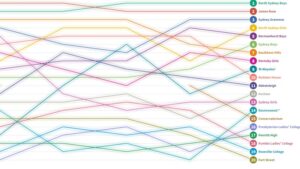
A recent incident at a Salvation Army store has ignited a broader conversation about the rising prices of second-hand goods in Australia. Casey, a shopper who thought she was purchasing a notepad for 50 cents, was shocked when the cashier informed her the actual price was $4.50. This discrepancy, which Casey shared on TikTok, has highlighted a growing issue across the country.
Casey explained that she approached the counter with her 50 cents ready, only to be told by the staff member that the price was much higher. “I’m not going to argue with the charity shop,” Casey recounted, though the staff member conceded, “If you think it says 50 cents, then whatever.” Despite the confusion, Casey paid the additional amount but took to social media to express her frustration.
Op-Shop Pricing: A Growing Concern
This incident is not isolated. Many Australians have voiced concerns over the increasing costs of items in op-shops, which traditionally serve as affordable options for low-income individuals. Casey’s experience resonates with many who feel priced out of these stores.
“With rising prices, you think op shops would’ve stayed cheap for that very reason so people that can’t afford stuff can actually still buy stuff,” commented one social media user.
Another shopper lamented, “I refuse to shop in op-shops now. I’m low income with four kids… I can’t afford to shop there anymore.”
The Changing Face of Charity Retail
The rising prices in op-shops are not just anecdotal. Courtney Leigh Hollins, another shopper, criticized a Western Australian Salvation Army store for pricing a table at $400 and a cream couch at $240. Similarly, mother-of-six Nicole Preece was shocked by a Melbourne store’s prices, including a $280 rug and $28 jeans.
These price hikes raise questions about the mission of these charity shops. Traditionally, op-shops have been a resource for those in need, offering affordable clothing and goods. However, as prices rise, many are questioning whether these stores are still fulfilling their charitable purpose.
Expert Opinions and Economic Context
Experts suggest several factors might be contributing to this trend. Rising operational costs, increased demand for vintage and second-hand items, and a shift in consumer behavior could all play a role. Dr. Emily Carter, an economist specializing in retail trends, notes, “The second-hand market has seen a surge in popularity, partly due to sustainability trends. This has inadvertently driven up prices as demand outpaces supply.”
“Charity is just a big business,” expressed a frustrated shopper, reflecting a sentiment that these organizations may be prioritizing profit over their original mission.
Implications and Future Outlook
The implications of this trend are significant. As op-shops become less accessible to those they were designed to help, there is a risk of widening the gap between low-income individuals and affordable goods. This could lead to increased financial strain on families already struggling in a challenging economic environment.
Looking forward, there is a need for transparency and accountability in how charity shops price their goods. Some suggest that a standardized pricing model could help ensure these stores remain true to their charitable roots while still operating sustainably.
As the debate continues, shoppers like Casey and others will be watching closely to see how op-shops respond to these concerns. For now, the conversation has sparked a necessary dialogue about the role of charity in modern retail.






